We have all seen it. We have all been there. You add a couple of gallons of chlorine and it disappears in a short time. You put in 2 gallons of chlorine and a week later the chlorine level is near zero. The 2 gallons of chlorine in a 15,000-gallon pool are about 17 ppm of chlorine and it is gone in less than a week. What happened? What should you do?
The first thing to do is to test the water. It could be chloramines, combined chlorine, high TDS, low cyanuric acid, unbalanced water, phosphates, or nitrites/nitrates. Water analysis will reveal the usual causes.
Combined chlorine should be zero or a maximum of 0.2 ppm.
Combined chlorine is the difference between FC (free chlorine) and TC (total chlorine). You should measure both of these with a good, quality test kit. Test strips can be used but may not have the same accuracy. Now subtract FC from TC. The difference should be 0 (zero). If CC is greater than 0.2 ppm, you need to superchlorinate.
Superchlorinate or shock will lower combined chlorine.
Add enough chlorine to raise the chlorine level to 15% of the CYA level or add an amount of chlorine that is equal to the combined chlorine level times 10, whichever is greater. Then make sure the dose has time to work – usually, 12-36 hours will do. Incomplete oxidation and undesirable disinfection byproducts will result if the superchlorination does not have sufficient time – minimum is 12 hours and chlorine level should be checked a few times during the first 12 hours and if the chlorine level has gone down by 2.0 ppm, more chlorine should be added to bring it back up to starting chlorine level.
High TDS is lowered only by water replacement.
Usually TDS is not a problem but in certain circumstances TDS can cause problems. All water has some TDS except for rain water, distilled water or reverse osmosis (RO) water. It represents the total of all the dissolved material in the water. Specifically, TDS is sodium, chloride, calcium, magnesium, carbonate, bicarbonate, nitrate, phosphate, sulfate, iron, copper, manganese and aluminum. When TDS reaches starting or tap water TDS plus 1500 ppm, it is time to drain part or all of the water. The Pool Percent Drain Calculator can do the calculation for you.
To protect chlorine you need cyanuric acid (CYA).
The amount you need is 30 to 50 ppm. When CYA is low, the chlorine is not protected. You need 10 ppm CYA for 1.0 ppm free chlorine. More does not do any better. The degradation rate of chlorine in direct sunlight without CYA is 75 % loss in 2 hours or a complete loss of chlorine in 4 hours. CYA will keep the chlorine in the water 8 times longer than without it. CYA slows down the chlorine kill rate so more chlorine is needed for safe water. High CYA can also produce corrosive water because part of the CYA shows as total alkalinity. So the total alkalinity may seem okay but when you adjust it for CYA, it can be low making the water corrosive.
Unbalanced water is easy to remedy.
Adjust pH to 7.5, total alkalinity to 90 ppm, and calcium hardness to 350 ppm for cementitious surfaces like plaster, or 250 ppm for vinyl, fiberglass, etc. TDS should be tested and lowered if more than Starting TDS plus 1500 ppm. The temperature will be important for Saturation Index calculations. The pH – Alkalinity Adjustment Tool can help with giving you exact amounts of chemicals needed to raise or lower pH and alkalinity.
Phosphates are the number one major nutrient for algae.
Many sequestering and chelating agents, metal removers and stain removers along with many tile cleaners have phosphates or phosphorus or phosphoric acid in them. Phosphates should be kept below 500 ppb (that is parts per billion). Use test strips to measure the level. Using a phosphate remover will get rid of the phosphates.
Nitrites are oxidized nitrogen from nitrogen-containing compounds in the water.
These include ammonia, urea, proteins, and amino acids – all from sweat, urine, saliva. deodorant, hair spray, perfume, cosmetics, sunblock products, and other personal care items. If you keep enough chlorine in the water these will be oxidized as they are introduced. The minimum chlorine level in the pool should be 7.5% of the CYA level or 5% of the CYA level if using borate. If you fail to keep enough free chlorine in the water to handle the expected contamination, then nitrites can be produced. If you add enough chlorine when nitrites are present, they will be destroyed and gas off as nitrogen. If not, nitrates are produced. Nitrates are not oxidizable and are not destroyed by any common oxidizer. Nitrites and nitrates should not be higher than 10 ppm. Super chlorination will remove nitrites. Dilution will lower nitrates.
If you have dealt with all of the above and made any necessary corrections and you still have a high chlorine demand, then further investigation and questions must follow.
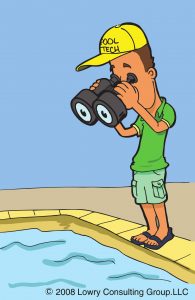 The first questions should be:
The first questions should be:
- Is the circulation system on long enough to get at least one complete turnover of water? A couple of hours a day of circulation during the summer is not long enough. One turnover is when the pump has pumped a volume of water equal to the volume in the For instance, if the pool has 15,000 gallons and the pump is pumping at 50 GPM (gallons per minute), then it will take 300 minutes to filter the water – 6 hours. Some above-ground vinyl pools require the circulation system to be on 24 hours a day.
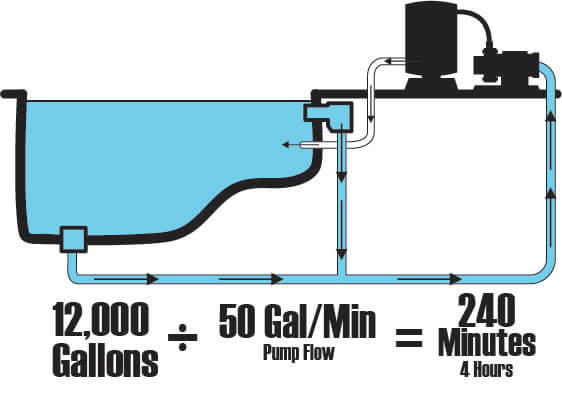
- Is the water temperature near 90 °F or above? High water temperature can accelerate chlorine loss.

- Has there been a change in the number of people using the pool? Obviously, an increased bather load will require more chlorine
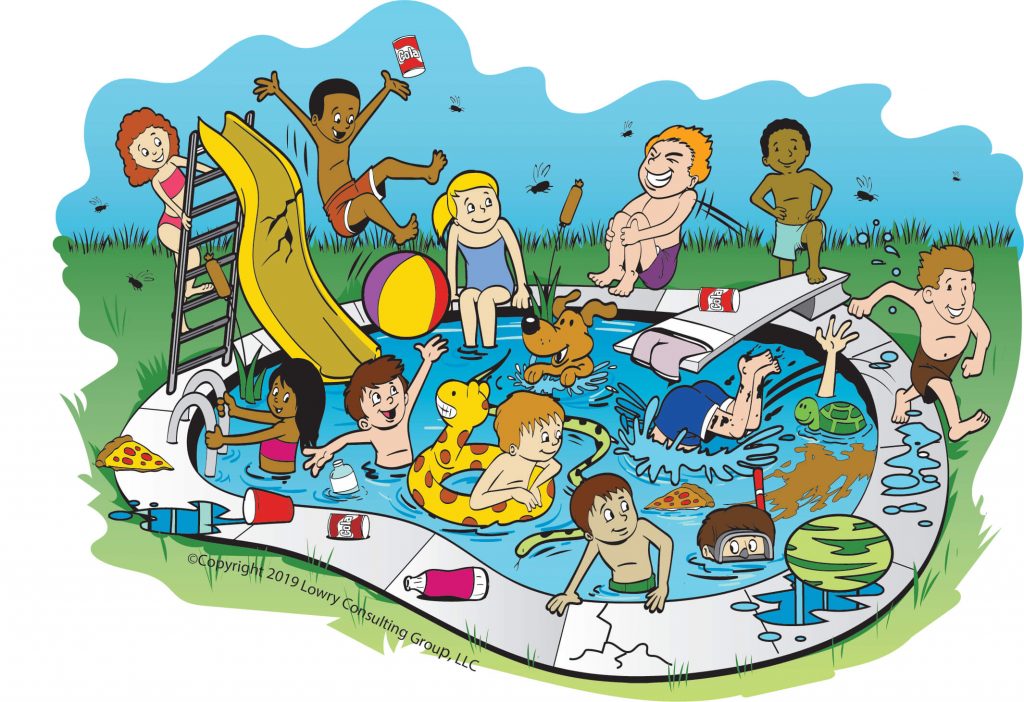
- Has the water been superchlorinated with enough chlorine to destroy all of the ammonia and nitrogen? This requires the chlorine level to be 15% to 40% of the CYA
- Are there visible algae? An algae outbreak will consume large amounts of chlorine. If algae are the problem, follow the guideline for an Algae Shock. Then if that fails, try a chelated copper-based algaecide that will not cause copper staining and following the label
- Has the pool gone for a long period without any chlorine? A pool that has not been chlorinated for a long time can build up an incredible chlorine demand. This could require draining or large amounts of chlorine. Vacuuming to waste can remove lots of algae rather than using big amounts of chlorine. If none of these is the problem, continue to You may need to add enough chlorine to be equal to 40% of the CYA level at a shock or hyper-chlorination dose.
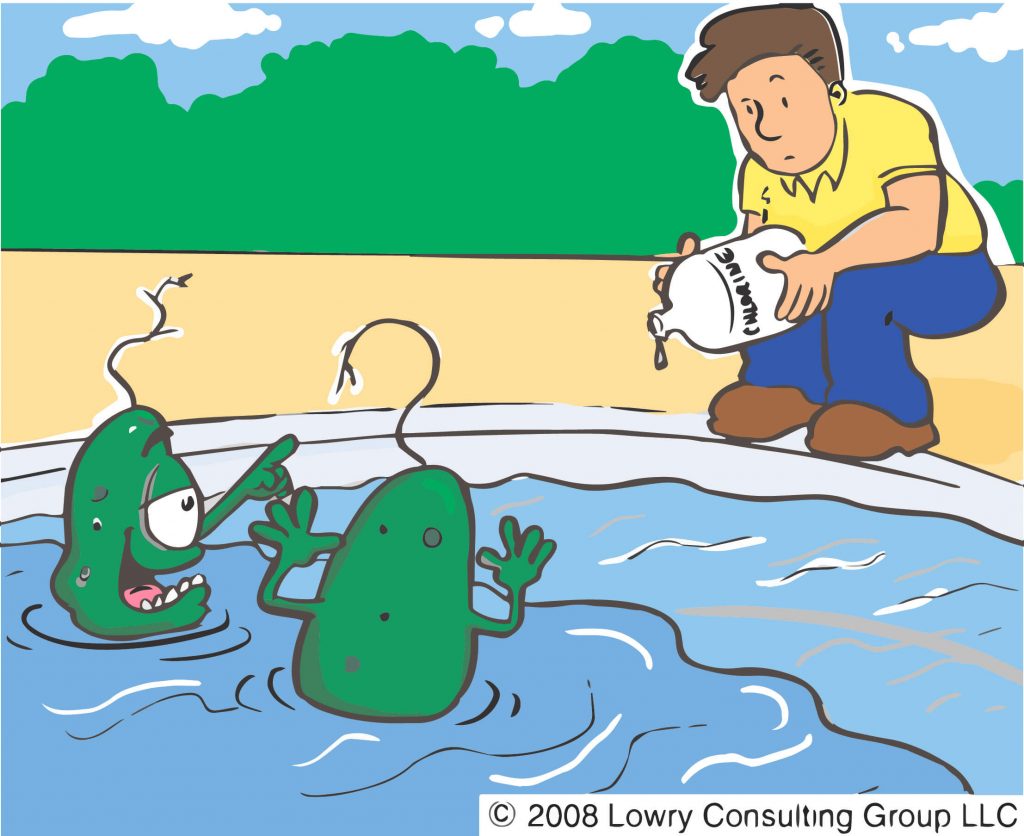
- Has there been a lot of rain lately? Rain brings nitrogen-containing compounds such as nitrous oxide (NOx) from our atmosphere into the pool. Nitrogen combines with chlorine to make chloramines and N-chloro compounds. Also, nitrogen is used by algae for nutrients and to make chlorophyll which makes them green. This is why grass turns green after rain. It’s not the water, it’s the nitrogen. Super- chlorination or an oxidizer will remove nitrogen.
- Has something gotten into the pool and is now in the filter? You can’t see it so you don’t know that it is there. The “something” can be Insects like mosquitoes, gnats, spiders, beetles, dragonflies, sow bugs, Rodents like mice, rats, squirrels. etc. Foliage like grass clippings, leaves, flowers, fruit, pollen, etc. These things get into the pool water and eventually end up in the filter. Once in the filter, they can not be seen but, they continue to decom- pose. A dead mouse or a lot of bugs in the filter will make it almost impossible to keep chlorine in the water. Mowing the lawn may get grass clippings in the pool. The remedy is to clean the filter – not just backwash it – break it down and really clean it.
The next “things” that might create a high chlorine demand come from the area around the pool.
- Has anything been built in the back yard like a gazebo, patio cover, new decking, or room addition?
- Have the neighbors done any construction lately?
- Has any painting been done recently?
- Have the neighbors painted?
- Has any new landscaping been added?
- Has the area been recently fertilized, used snail bait or other insecticides?
- Have some solvents like paint thinner, turpentine, kerosene, gasoline, motor oil, WD40, have got- ten into the pool? Sometimes the pool or spa is used to rinse off or wash up after working nearby.
- Has a product been used that contains bromide? Many algaecides contain bromide (actually sodium bromide – NaBr). If there is any bromide in the water then all of the chlorine in the water converts bromide into bromine. The pool has been flipped to a bromine pool. Now you have a bromine sanitizer pool, not a chlorine pool. All chlorine in the water now and all chlorine added will be used to convert bromide into bromine (technically, Br– + HOCl –> HOBr + Cl–). It takes 2.2 times as much bromine as chlorine to do the same job. The recommended level of bromine in pool water is 4.0 to 6.0 ppm while chlorine is 2.0 to 4.0 ppm. Also, bromine is not protected by CYA. The loss of bromine to sunlight is 65% in 2 hours and you can not slow it down. The sunlight converts HOBr (the killing form of bromine) into bromide ions (Br–). Then the bromide ions can react with HOCl (the killing form of chlorine) to form HOBr. Bromine is reduced by sunlight to bromide and converted to HOBr by any chlorine. Contaminants and sunlight reduce bromine to bromide and it starts all over again. Draining and a long time will be needed to reduce bromide.
- Let’s not forget our beloved pets. However, they are a huge source of contamination. One medium-sized dog is equivalent to about 50 people as far as contamination and chlorine demand are concerned. They may carry disease and feces from other areas and other animals into the water. They can have insects and may not have been cleaned recently. Chlorinated water can dry out a dog’s skin and give them skin and itching problems. Just be aware.
These are by no means all of the possibilities. I am sure you can think of more now that I have got you thinking.
Most of the time, you do not realize that it is something that you are doing. If you talk long enough, ask enough questions and analyze, usually, something will come to mind.
Remedies usually involve super chlorination, oxidizers, phosphate removers, algaecides, clarifiers, water replacement, vacuuming, brushing, and filtration. Then, thorough cleaning of the filter or replacing the filter medium will physically remove it from the pool. Which of these you need will be determined by what caused the problem. Sometimes, you can’t find out and its just an unexplained phenomenon. When this happens, the only remedy may be to drain the water and start over or fresh.
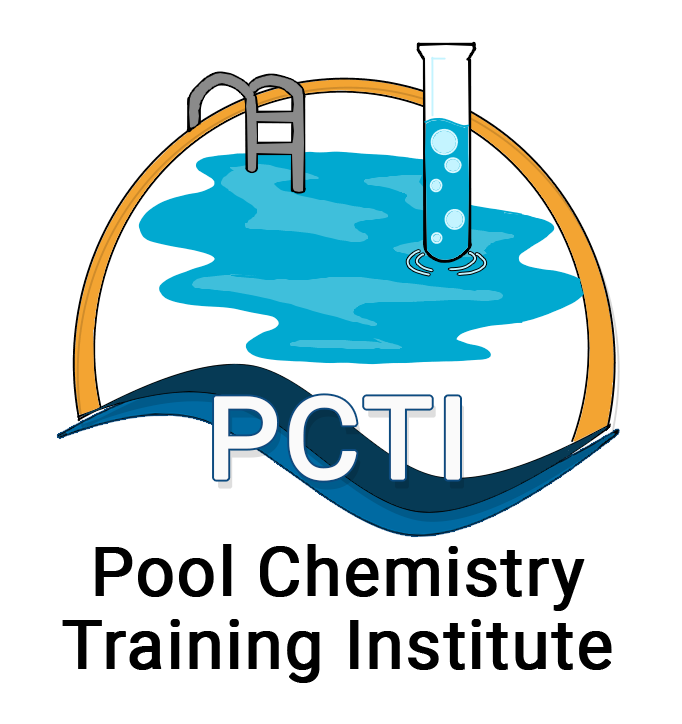

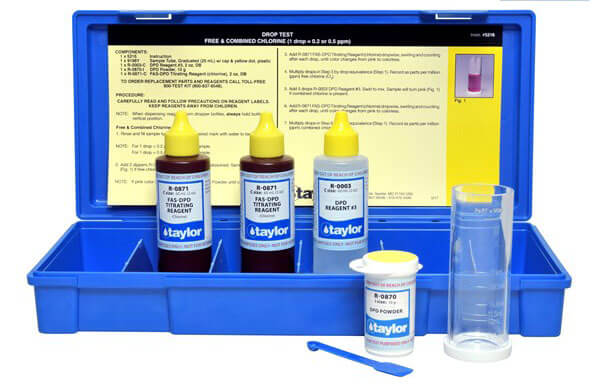
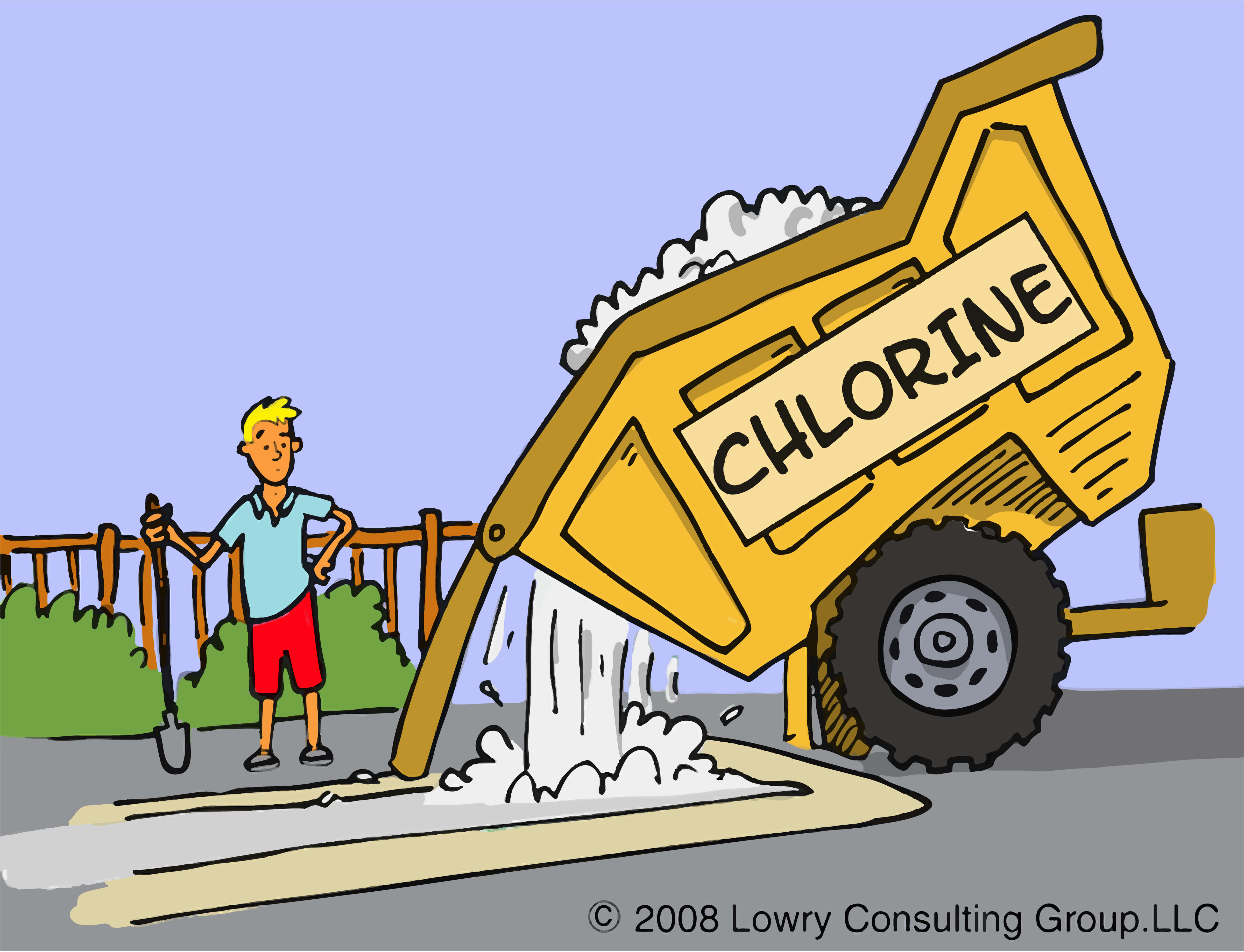

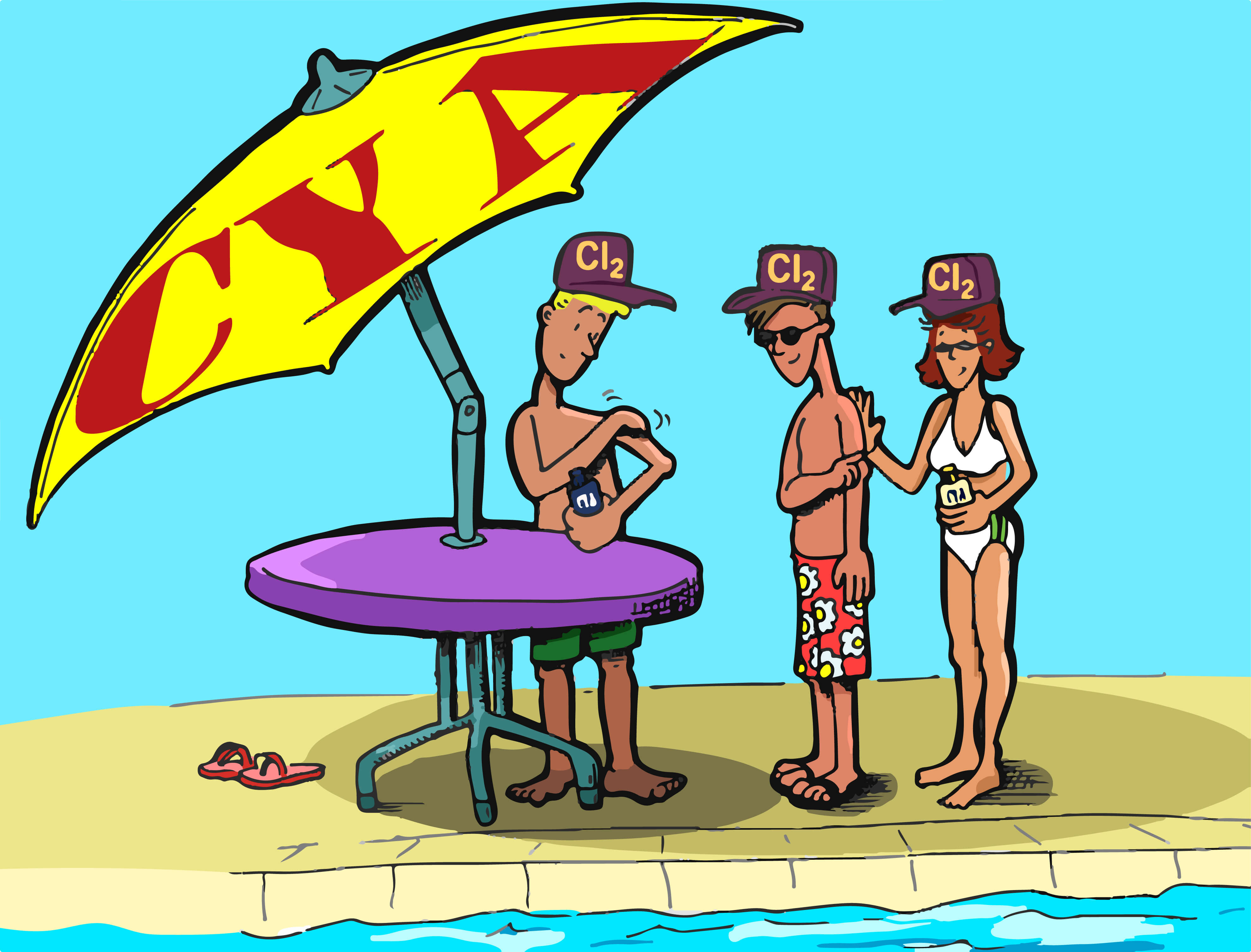
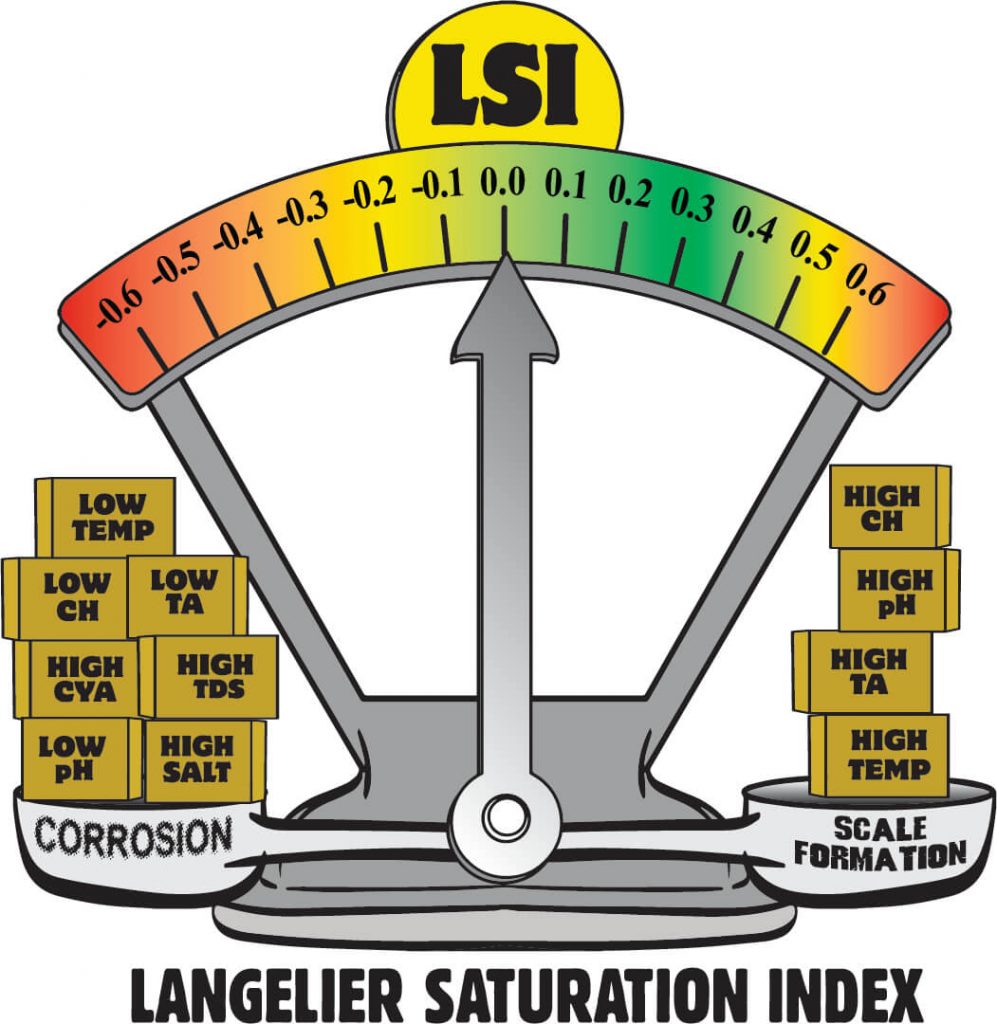
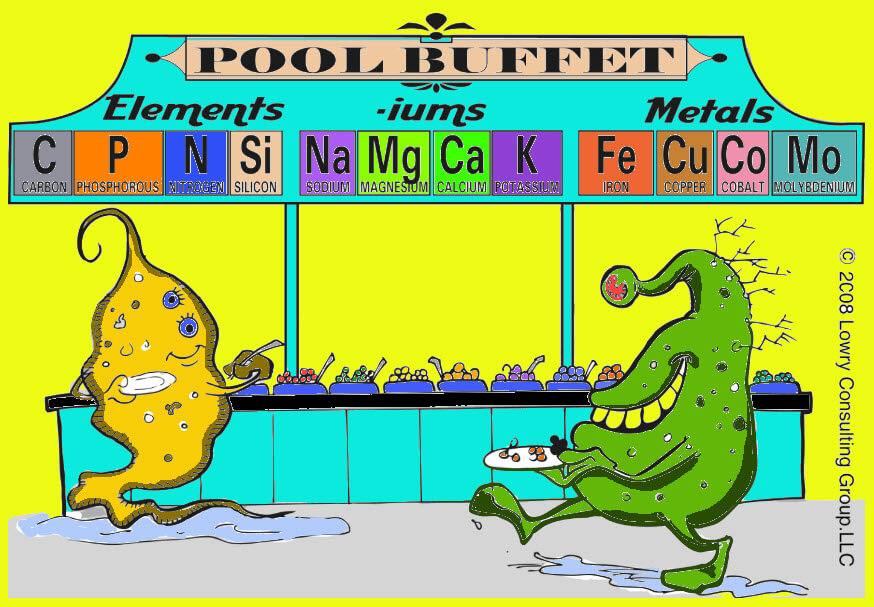




Leave a Reply
Your email is safe with us.
You must be logged in to post a comment.